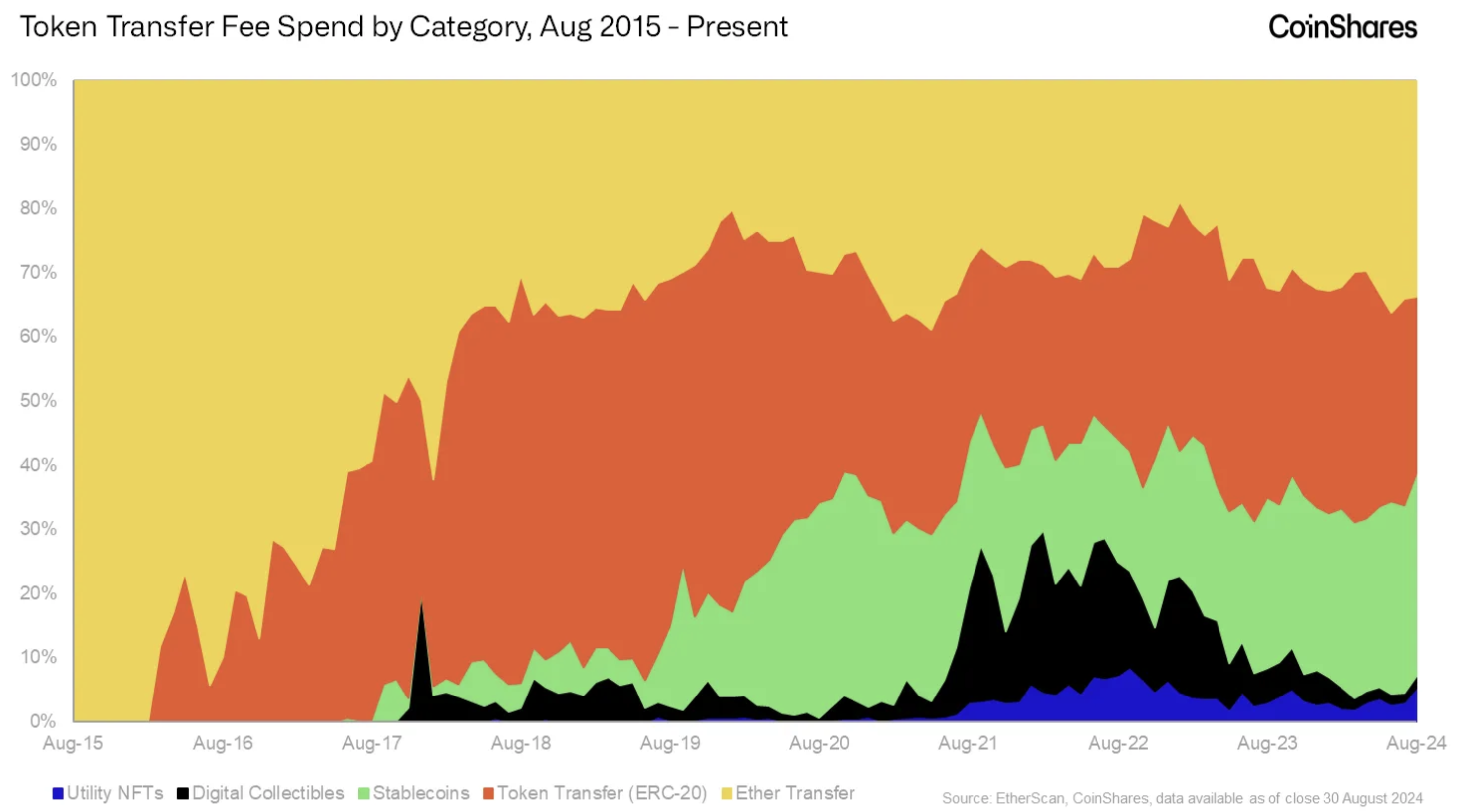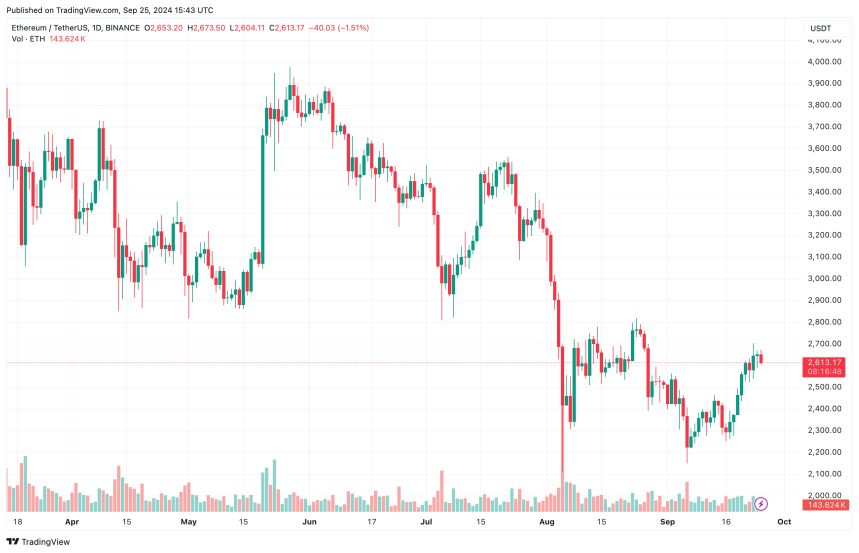This article is also available in Spanish.
According to the company, the demand for Ethereum (ETH) is largely driven by the employ of the token in on-chain applications and token transfers. report by CoinShares.
Ethereum Employ Cases Have Grown, But Long-Term Value Is Missing
In a recently published in-depth report, Matthew Kimmell of CoinShares noted that despite Ethereum’s potential to host popular applications in the future, investors still fail to see significant value in its native token ETH.
Since its inception in July 2015, Ethereum has made great strides in development, continually discovering novel employ cases ranging from elementary token transfers, to employ in on-chain applications, decentralized finance (DeFi) protocols, and, most recently, non-fungible tokens (NFTs).
According to the report, Ethereum has seen increasing utility since 2018, when its primary employ case shifted from token transfers to elementary on-chain applications, digital identity systems, and on-chain withdrawals.
As of 2020, Ethereum facilitates more convoluted employ cases, such as protocol staking, liquidity mining, MEV (maximum extractable value), bridges, oracles, and second-layer technologies. Although increasing While Ethereum employ cases may seem beneficial at first glance, the challenge is that ETH usage is concentrated in a confined range of services.
The report reads:
However, the tough truth is that a very diminutive group of services consistently make up the majority of Ethereum usage, and these groups largely focus on speculation or elementary value transfer, and not necessarily the convoluted “real-world utility” employ cases that the creators of the Ethereum Foundation originally envisioned.
The chart below confirms this observation, showing that the majority of ETH usage is in elementary token transfers and application interactions, followed by infrastructure, intermediate operations, and contract management.
Markets dominate app usage, stablecoins lead token transfers
The report highlights that on-chain markets – especially decentralized exchanges (DEXs) like Uniswap – dominate the app’s interactions. Interestingly, over 90% of transaction fees come from market activity.
In the first half of 2024, Uniswap alone took in about 15% of Ethereum’s transaction fees. This is not surprising, as the leading DEX exchange recently achieved milestone of generating $50 million in revenue. On the contrary, NFT trading platforms suffered dramatic losses decrease in user transactions since their peak in 2021
Token transfers continue to play a key role in Ethereum network activity. As the ecosystem continues to grow, the type of tokens transferred has diversified. However, ETH and stablecoins such as USDT and USDC have become the dominant tokens in terms of transaction fees.
The chart below illustrates the growth of stablecoins since mid-2017, when USDT began enjoying broad adoption as a trading pair for nearly all listed ERC-20 tokens on cryptocurrency exchanges. The entry of Circle in delayed 2020 with its USDC stablecoin further increased the employ of stablecoins in the broader Ethereum ecosystem.

An captivating observation in the report is the increased employ of Ethereum Layer 2 solutions. While their adoption has solved some of Ethereum’s scalability issues, it has inadvertently reduced demand for Ethereum’s underlying layer. Kimmel notes:
In our opinion, the latest major change, EIP-4844which heavily promoted Layer 2, worked directly against the economic design benefits of EIP-1559, which tied the value of Ether to the needs of a Layer 1 platform.
ETH is trading at $2,613 at the time of publication, up 0.2% in the past 24 hours. Stablecoins like USDT and USDC have market capitalizations of $119 billion and $36 billion, respectively.

Featured image from Unsplash, charts from CoinShares.com and Tradingview.com
